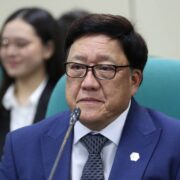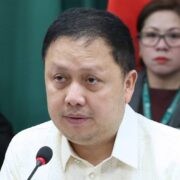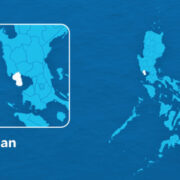Retire without worries, live life to the fullest

After decades of toil and trouble, it is but logical for Filipinos to paint a pretty picture of retirement in their heads.
They look forward to spending the rest of their lives in comfort, believing that their savings and government pension—plus perhaps some financial support from their children or relatives—will be more than enough to meet their basic needs and even luxuries such as shopping and travel.
According to a study on retirement presented by leading insurance firm Insular Life (InLife) last January, Filipinos have “high aspirations” for retirement and want to live their senior years free from any debt.
It will not take long after those regular paychecks stop coming in, however, for the illusion to shatter.
This, as most Filipinos either underestimate their actual expenses in retirement or overestimate the government pension they will receive and/or interest on their savings accounts.
Jose Eduardo Ang, chief product and innovation officer of InLife, told the Inquirer that some Filipinos fail to account for factors such as inflation or the increase in the prices of basic goods and services, health-care costs and unforeseen or emergency expenses.
Then there is the fact that Filipinos are living longer. This means that what they have set aside may not be enough to sustain them for the next 10,20, or 30-plus years without a steady source of income.
“There is also an assumption that retirement benefits offered by employers and government pensions will adequately cover retirement needs,” Ang said, “However, these benefits may be limited and insufficient to maintain one’s desired lifestyle.”
Low grade
Indeed, the country’s state-run retirement system has been ranked among the lowest among 50 countries included in the Mercer CFA Institute Global Pension Index. This benchmarks government pension systems against a set of indicators including adequacy and sustainability of retirement income.
In the 2024 edition, the Philippines was given a D grade—the same grade over the past three years—which means that its system “has some desirable features but also has major weaknesses and/or omissions that need to be addressed; without these improvements, its efficacy and sustainability are in doubt.”
Many retirees also assume that their children will take care of them as they age, in return for readily spending on them as they were growing up.
But this may not always be the case given shifting priorities. Plus, what their children earn may also be just enough for themselves and their own families.
Given this, Filipinos should devise a better plan for their life after retirement, which means saving or investing more during their productive years so that they can have the retirement life that they envision.
Warning
Not enough Filipinos, however, are doing so even after being warned that they may not have enough to live on in their retirement years.
Preparing for retirement that may come decades down the road is just not given enough priority.
InLife’s study revealed that only 30 percent of the survey respondents were confident that they had enough funds to tide them over as they age.
Inadequate preparation
Ang said several factors contribute to the inadequate retirement preparation among Filipinos, led by the sobering fact that immediate financial needs such as housing, food and health care take precedence over long-term savings.
These basic needs and current expenses that go up with inflation are top priority, thus making it challenging to allocate a portion of finite funds for retirement.
The cost of health care likewise continues to surge.
In 2023, the Philippines spent a substantial P1.44 trillion on health care, Ang said, with households shouldering a hefty 44.4 percent or P633.6 billion.
“This significant financial burden can drain one’s finances and eventually impede the ability to save for retirement,” he added.
Another factor barring many Filipinos from preparing for retirement is the basic lack of understanding about investment options and financial planning.
“Many Filipinos struggle with determining appropriate savings amounts and strategies. Retirement planning is deemed an intimidating process so they delay it,” added Ang.
Planning too late, however, will have dire consequences as this will reduce the time for investments to grow, resulting in a smaller retirement fund.
But unfortunately, Ang said many Filipinos do not even plan for their retirement at all.
Thus eventually, they are left with no other choice than to look for a way to make a living in their retirement years.
It is indeed a mistake to rely on savings accounts alone without exploring other investment avenues that may provide a higher return and a better hedge against inflation that will weaken their purchasing power over time.
“Having a good mix of equities, mutual funds, guaranteed insurance products and other investments allow consistent growth of retirement assets over time,” he said.
InLife Retire Assure
To help Filipinos beef up their retirement funds, InLife recently launched InLife Retire Assure, which, among others, promises guaranteed monthly income starting at age 60 or 65 until the retiree turns 100.
Ang said that InLife Retire Assure provides cash dividends that can increase over the retirement years to keep up with inflation. It likewise has a life insurance component to be given to the insured’s beneficiaries if the insured passes away before turning 100.
“By encouraging regular premium payments, the plan promotes a disciplined approach to saving, helping individuals accumulate the necessary funds for a comfortable retirement,” he said.





















